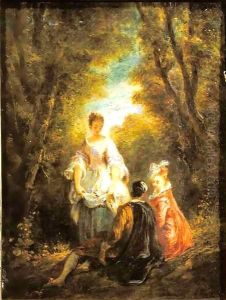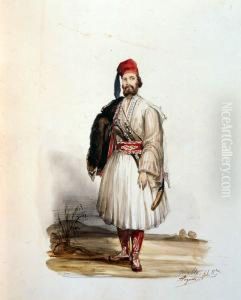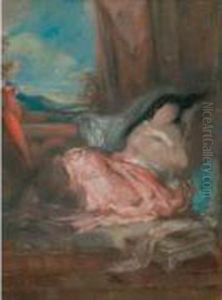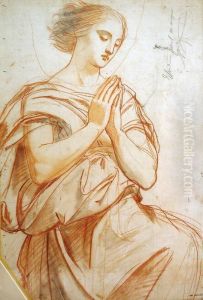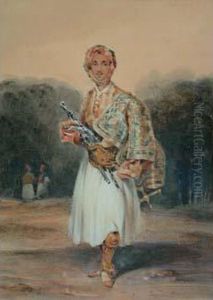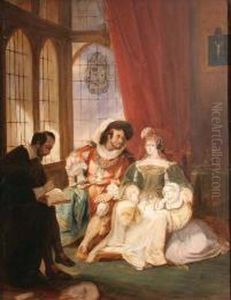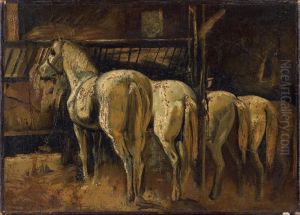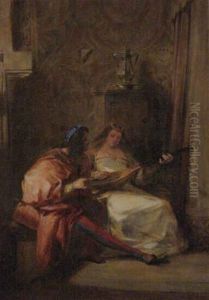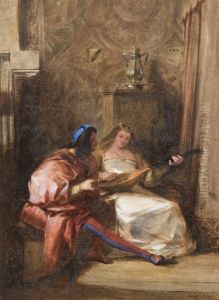Jules Robert Auguste Paintings
Jules Robert Auguste was a French artist known for his work as a painter and engraver. He was born on May 23, 1789, in Paris, a period that coincided with the French Revolution, an event that would later influence the themes and expressions of many artists of his era. Auguste showed an interest in art from an early age and received his initial training under the guidance of Jean-Baptiste Regnault, a prominent painter of the time.
During his career, Auguste developed a style that was reflective of the Neoclassical movement that dominated French art in the late 18th and early 19th centuries. This movement sought to revive the artistic principles of classical antiquity and was characterized by an emphasis on clarity, order, and symmetry.
Auguste's body of work includes historical scenes, portraits, and genre paintings. He gained recognition for his finely detailed engravings, which were highly regarded for their technical skill and artistic finesse. His engravings often reproduced the works of other artists, helping to disseminate the popular styles and compositions of the period.
Throughout his life, Jules Robert Auguste participated in the Paris Salon, an official art exhibition of the Académie des Beaux-Arts in Paris. The Salon was the foremost art exhibition in the Western world at the time and provided artists with an opportunity to present their work to the public and to potential patrons.
Despite his contributions to the art world, Auguste's name is not as widely recognized today as some of his contemporaries. Nonetheless, he made a lasting impact through his dedication to the craft of painting and engraving. He continued to produce art until his death on January 15, 1850. Today, his works can be found in various art museums and private collections, where they continue to be appreciated for their historical value and craftsmanship.
